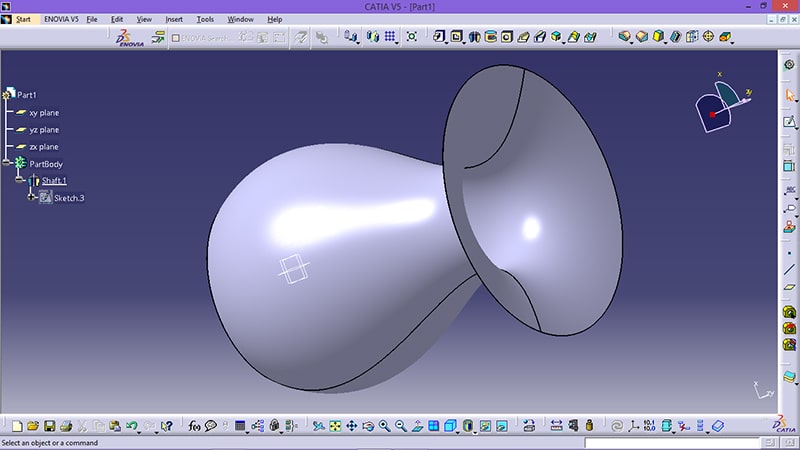In the modern age, freelance work is not only common but necessary for a well-functioning business. According to Forbes, roughly 36% of the U.S. workforce engaged in some sort of freelancing in 2017, and that number is growing three times faster than the growth of the overall U.S. workforce.
If these trends continue, the United States workplace will be over 50% freelance by 2027. Not only that, but 48% of companies use freelancers, and 53% of companies now have remote workers employed in some fashion. Many hiring managers believe that the growth of freelance work will be more disruptive than even the implementation of A.I.
Aside from full-time work, even, there are people taking opportunities to freelance for short periods, for contests, and so much more.
There are 3D modeling design contests in which people enter remote work around the clock. Freelancers will sometimes join up with a team for a few weeks to earn extra money and then never do it again.
Look through Craigslist and you can find people offering CAD drafting and design services, PDF to AutoCAD conversion, and 3D animation, among practically any other thing you can imagine, all from the luxury of their penthouse, basement, or ranch.
The main problem with all of this, however, is that since we’re in a transition period between the traditional work environment and a future of freelancers and remote workers, companies are not well designed to support and manage these types of employees.
In decades past, it was simple to ensure your employees were on task and focused because you could walk by their desk and check on what they were doing. This becomes much more difficult when that employee’s office is some 3,000 miles away and their work hours are when you are typically asleep.
So, what is the best approach to hiring and managing CAD and 3D modeling freelancers? Let’s examine several tips, first for managing remote and freelance workers in general, and then we’ll dive into CAD professionals specifically.
Set Goals and Standards
To ensure quality work when managing any workforce is setting solid goals, measurable achievements, and objective measures.
This applies to freelance, remote, in-person, full-time employed, and any other type of employee you have working in your organization. Clearly defined goals and expectations are a necessity, and they will drive the best productivity.

Frankly, almost everything else you can do to effectively manage a workforce full of freelancers and remote workers derives from this initial step.
If you tell someone to build you a house, but you never specify if you want one floor or two, or if you never tell them what color you want the exterior to be, you will likely not receive what you are looking for.
More importantly, you need to give your team members deliverable action points, and everything will flow from that. Returning to the analogy of a house, if you tell a contractor that you would like them to build you a kitchen, they will do just that – but it will likely not be what you are looking for.
They may create a small kitchen with black cabinets and butcher-block countertops, while you were looking for a large kitchen with two ovens, white granite, and an island.
Instead, tell your contractor that you are interested in those specific design items, and break out the pieces into individual, piece-wise goals.
One of the best approaches to setting defined goals and standards is the S.M.A.R.T. method. This is only a guide and can be tailored to any individual or setting, but it goes as follows: Create goals that are Specific, Measurable, Attainable, Relevant, and Time-bound.
Specific
“Give me a design of this building’s first floor soon” or “Give me the first floor with a reception area, elevators, and an entryway designed using materials x, y, and z by next Tuesday.” Which will get you a more accurate result?
Measurable
“I need this beam you designed to be better” as opposed to “I want this structural beam to support a load of 25,000 lbs instead of just 20,000.” One of these will get you an exact result, and it isn’t the first one.
Attainable
“Can you draw up the new sketch for that building in Times Square by next week?” is not going to work out very well, especially if they are starting with nothing.
Asking, “Can you design an exterior drawing for the Times Square building by Monday? Then we can begin filling in an interior structure by the end of the week.” This will give you a similar result but will break it into attainable sections so that it is completed in a timely and quality manner.
Relevant
This is a bit more conceptual, but when you are giving someone a project or a goal, does it fit into the work they are doing for you? Is it relevant to what they are trying to accomplish? If you ask your CAD designer where you can source manufacturing, you may not get the best results.
Leave the relevant work to them, drawing the schematic, and give the other details to someone who can focus on them.
Time-Bound
This is one of the most essential, and it is a good bookend alongside the Specific criterion. If you do not put a time constraint on a goal, you run the risk of not getting it in time, or of it not being done correctly.
Telling someone to complete something as soon as possible is much less helpful than telling them I need it on my desk by Tuesday at 5 PM. It also gives you the opportunity to break tasks into smaller, time-constrained pieces.
Instead of telling an employee to complete Project X by December, tell them you want Phase 1 complete in March, Phase 2 in July, and Phase 3 by the end of the year.
Such an approach will allow you to monitor the progress, make adjustments as needed, and ensure that it gets completed on time. It also allows you to periodically update a customer about the development of their project, and that added visibility will instill confidence in them as well.
Set Your Expectations by Your Objectives, Not by Observation
Now that you have set up specific, actionable goals, let those be your defining standards by which they succeed or fail. If you set up clear goals, allow them to work towards them and meet them in their own way.
Like we discussed earlier, you can’t walk by their desk to see that they’re completing the assigned task. But with a quantifiable task, you will know if it reaches your inbox by 2 PM on Friday. It does not matter if they complete the job in 3 or 30 hours, or if they do it at 1 AM or 1 PM if it arrives on time.
By setting up a very defined objective, you are empowering these workers to succeed, and that will ensure your success.

In many cases, a standard work environment overlooks this type of goal definition and suffers
If you are setting clearly defined goals regularly, you will be able to track projects and employee effort more efficiently than ever before, which will significantly improve evaluating individual and company performance.
An added benefit is that it incentivizes work instead of time, and this motivates an employee and gives them freedom and energy in their activities, as well as greater enjoyment of their work.
If a supervisor tells a freelancer they need to submit a design by Friday, and that’s their only task, that contractor can work Monday and Tuesday diligently and submit it early. So, they can take the rest of the week to work on other projects and get ahead, or take time off and relax.
Either way, it incentivizes completing objectives instead of logging hours, and in that way, you can get projects done more quickly and end up ahead of schedule.
Encourage and Equip Flexibility
With goals and objectives in hand, you can set your freelancers and remote workers free to complete projects and instill profitability.
Well, almost. You still need to engage with them and be able to communicate effectively. One of the best things to do is to allow them to be flexible and be flexible yourself.
If you have a stable platform for interacting with contractors and sending and receiving their work, you will feel confident that you can always access what you need and you won’t be worried about constraining them to a typical nine-to-five timeframe.
If you are willing to receive projects anytime, they will feel more comfortable working on their own schedule, and won’t feel the need to contort themselves into a particular structure. More than almost anything else, freelancers are looking for flexibility.
Either they are working another full-time job and are doing the work for you at lunch, in the mornings, and after the kids go to bed. Or, they enjoy the ability to wake up at 11 AM and work until 8 PM so they can go out with friends, or even take classes around the schedule of a freelancer.
There are many reasons why freelancers enjoy the flexibility, and they are all personal. Encourage it. As long as they have access to an internet connection, they should be allowed to work when and where they want.
Your flexibility to be willing to accept projects at odd times, or meet with them (virtually, of course) at odd hours will allow them to work effectively and encourage them to get their work done well because you are willing to work with them.
Managing Freelance Engineers
If you work with people in the engineering design industry, there are some specifics. If you’re working with freelance engineers, industrial engineers, and 3D modelers, there are some specific things you can do to better manage and equip them. Let’s start with the basics.
Hiring a Freelance Industrial Designer or Engineer
This is where it all starts. You need to hire someone to work remotely for you or do some freelance design. One of the most important things you can do is to vet them properly and ensure that you are getting a quality worker.
If you set clear goals and give them as much flexibility and control as they need, but they are not high-quality workers, you are going to get poor-quality work. You’ll end up letting them go pretty quickly.
This will be a headache for you and put you behind in terms of budget and deadlines. Check their references, view a portfolio of their work, and try to understand their priorities and skillset before hiring them.
Utilize a Proven Platform for Communicating and Transmitting Projects
A proven, high-quality platform will allow you to communicate with these contractors and transmit project information seamlessly around the clock.
In addition to a system for hiring and onboarding, such as Cad Crowd, it’s very beneficial to set up project management tools, tracking systems, and feedback systems. They will help you to connect and manage the members of your team.

There are management tools like Trello or Basecamp that you can use to interface with the designers you hire. Systems like Telegram or Slack can help your team to stay in touch and create feedback.
Naturally, these are going to be fairly technologically literate individuals. So, they will likely work well with programs like these.
Value Solutions over Processes
Freelance CAD designers, industrial designers, 3D modeling, and drafting services are not rigid people. Far from it, in fact. These tend to be the people who have found a way to express their own creativity in a mathematical structure.
This means they also tend to have creative solutions to problems they are facing. If you ask two of them to design the same idea, you will most likely get some very different solutions. However, they will both function well.
An industrial designer is someone you can ask to make something happen, and they’ll solve it in their own way. It may not involve the process that you expected, but that doesn’t mean it won’t be functional.
This may seem contrary to my earlier point about giving them specific goals, but it isn’t. It is tied up in how you set these goals. As long as you leave the process to each goal open-ended enough for them to work in the most comfortable way for their own style, they will accomplish them. And likely figure out things that you weren’t even planning to do in the process.
One of my favorite stories relating to this is about Nikola Tesla. He wasn’t exactly an industrial engineer, but he was somewhat of a jack-of-all-trades when it came to engineering.
During his infamous wars with Thomas Edison, he won the bid to supply electricity for the World’s Fair. Unfortunately, Edison refused to let him use his patented lightbulbs, which work because of the metallic screw-in base carrying electricity through the filament.
So, naturally, Tesla decided that he could create his own lightbulb to use at the World’s Fair, which he did. His design was slightly different. It was using stiff contacts at the bottom of the screw in the base to conduct the electricity, which didn’t violate the patent.
He produced tens of thousands, just for the fair, and was able to complete the project. He knew the end result, but the method of getting there was novel and unexpected.
Connect with Them
If you search for information on managing freelancers, working with engineers, hiring remote workers, or anything similar to that, you will find a myriad of articles, and they all have at least one point in common.
Build relationships and connect with them.
It’s the most effective way to get as much as possible out of your employees, remote or not. When you connect with these workers, they are more invested in you and your mission. When you can encourage them in their passions and pursuits, and know how to help them, you can make them even more productive.
The issue with a remote workforce, however, is that it is more difficult to connect. Some people say it’s essential to get all of your workers together at least once, but many times this isn’t feasible.
It would be pretty challenging to wrangle employees that are spread throughout the United States. Often, they are even more far-flung than that. Let’s be honest, who wouldn’t love the opportunity to work as a freelancer while backpacking through Europe or Australia?

Fortunately, as technology makes it easier to freelance, it also enables us to remain connected. Skype, video conferencing, social media, and other platforms allow you to connect effortlessly with these people.
Even without speaking in person or having a video chat, Facebook, LinkedIn, and other services will let you get to know each other and share your interests. Building these relationships is fundamental to creating a dynamic team that will accomplish the goals you set forth.
In Conclusion
Managing a complex, freelance team is a cumbersome task. Coordinating schedules, availability, and project deadlines can be overwhelming.
But just like regular management, communication and clearly defined expectations are the fundamentals to having a successful experience with it. It may sound silly, but it’s the same thing as in a marriage – you need to communicate and relate to one another, be flexible, and be clear about your goals and expectations.
Otherwise, you won’t ever know if you are successfull meeting the expectations that are being asked of you.
If you have a product or design idea that you want to create and you need to hire a remote industrial engineer, there is no better place to start than Cad Crowd.
Cad Crowd offers vetted, professional engineers, drafters, and designers who will deliver the best quality design to make your dreams a reality.
The first step in creating a project or developing a team is hiring the right talent, and Cad Crowd enables you to do just that. It also protects your intellectual property, weeds out unqualified candidates, and offers a platform for communication and ongoing contact.
Whether it’s for a design contest that will last three weeks, or for a full-time remote position for the next 30 years, you can count on Cad Crowd to find the perfect person for your job and to get you more than just a leg up on the competition. Look into how it works or get a quote if you’re ready to get started.
